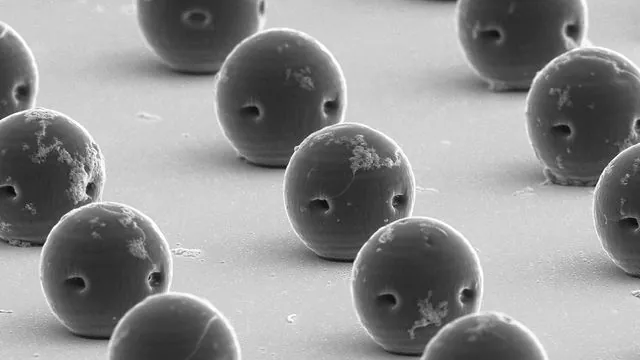
Revolutionary Mini Robots Pave the Way for Targeted Cancer Treatment!
2024-12-12
Author: Rajesh
Introduction
Imagine a future where tiny robots, not those clunky metal beings, but minuscule, bubble-like spheres, can deliver medication exactly where it's needed in the human body. This isn’t science fiction; it’s becoming a reality thanks to groundbreaking research from a team at Caltech. These innovative machines hold the potential to revolutionize cancer treatment and precision drug delivery.
The Challenge of Traditional Drug Administration
The challenge with traditional drug administration is that once a drug enters the body, it spreads out, making it difficult to target specific tumor cells effectively. This is where the Caltech-developed bioresorbable acoustic microrobots (BAM) come in. They are engineered to not only survive in hostile bodily environments, like stomach acids, but also to be precisely controllable. Scientists can guide these microrobots directly to cancerous cells, ensuring that drugs are released only at the right location and with maximum efficiency.
Recent Research Findings
In a recent study published in Science Robotics, the team showcased that the BAMs successfully delivered therapeutics that significantly reduced the size of bladder tumors in mice. "We are excited about the potential of this platform," said Wei Gao, a lead researcher and professor of medical engineering at Caltech. "We can now direct our microrobots to the tumor site and release the drug in a controlled manner, which optimizes treatment."
Overcoming Challenges in Nanorobots
The concept of nanorobots has been around for a while, but the practical application in living systems has faced significant hurdles. The complexity of maneuvering such tiny machines through the human body—especially amidst dynamic biofluids like blood and urine—has made it difficult to utilize them effectively. However, the BAMs developed at Caltech tackle these issues head-on.
Design and Functionality of BAMs
Constructed from a hydrogel known as poly(ethylene glycol) diacrylate, these microrobots are about the size of a human hair, yet they are filled with promise. The distinctive spherical shape is not merely a design choice; it serves practical purposes for drug delivery and biocompatibility. Adding to their sophistication, the outer layer is designed to be hydrophilic, preventing the robots from clumping together during their journey.
Guidance and Drug Release Mechanism
But what makes these microscopic devices truly extraordinary is their ability to be guided using external tools. Incorporating magnetic nanoparticles allows researchers to steer the robots with an external magnetic field, ensuring that they reach their target accurately. When they arrive, the drugs they carry can gradually diffuse out—making for precisely timed releases of medication.
Innovative Two-Layer System
The team also developed innovative methods to create a two-layer system within the microrobots. The outer layer is hydrophilic, while the inner layer is hydrophobic to trap air bubbles essential for propulsion and imaging. Utilizing ultrasound fields, these trapped bubbles cause the surrounding fluid to flow, effectively allowing the robots to move with agility through various bodily fluids.
Exciting Results and Future Prospects
Researchers are excited about the results. In their tests, the BAMs delivered therapeutics over a span of three weeks and achieved significant tumor shrinkage, outperforming traditional therapeutic methods not utilizing the robots. This research not only opens new avenues for cancer treatment but also holds promise for wider applications in drug delivery and surgery.
Conclusion
"The implications of this technology are vast," Gao remarked. "In the future, we could adapt our robots to deliver different therapeutic agents for various medical conditions. We may even begin trials in humans within the next few years." As we stand on the brink of revolutionary medical advancements, these microrobots could signify a leap towards more effective, personalized treatments—changing the way we fight diseases forever. Keep an eye on this space as the world inches closer to making science fiction a reality!
Stay Updated
For more captivating breakthroughs in technology and medicine, stay tuned for our updates!


 Brasil (PT)
Brasil (PT)
 Canada (EN)
Canada (EN)
 Chile (ES)
Chile (ES)
 España (ES)
España (ES)
 France (FR)
France (FR)
 Hong Kong (EN)
Hong Kong (EN)
 Italia (IT)
Italia (IT)
 日本 (JA)
日本 (JA)
 Magyarország (HU)
Magyarország (HU)
 Norge (NO)
Norge (NO)
 Polska (PL)
Polska (PL)
 Schweiz (DE)
Schweiz (DE)
 Singapore (EN)
Singapore (EN)
 Sverige (SV)
Sverige (SV)
 Suomi (FI)
Suomi (FI)
 Türkiye (TR)
Türkiye (TR)